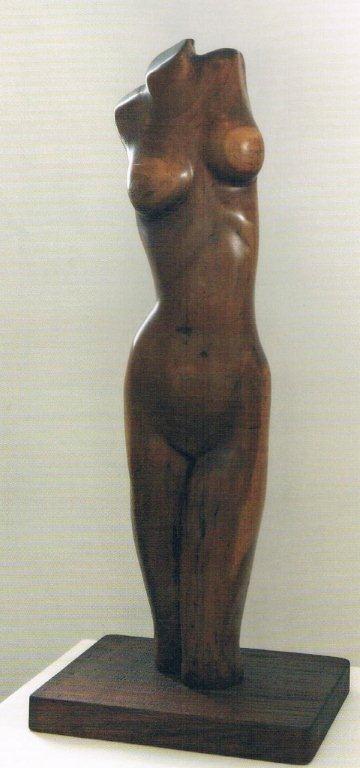Curaçao Classics. Visual art 1900-2010 appeared as a result of an exhibition held in the latter part of 2010 in the Curaçaosch Museum; Antepasado di Futuro [Ancestors of the future].


The overview work is written by Jennifer Smit and Felix De Rooy, who were at that time the curators of the successful exhibition. In 2002 KIT Publishers published Arte. Dutch Caribbean Art, written by prof. Adi Martis and Jennifer Smit, in which the emphasis was mostly on art from Aruba and the Antilles. This publication about Curacao is then indeed of great significance, not only for the island itself and the Caribbean region, but also for the Dutch art history; a history in which up until now little research has been done into the development of art in the former colonies.
There are similarities as well as differences compared to the situation in Suriname. In the beginning of the 20th century painters in Curacao also worked according to the traditional, European academic style. The art education followed by most was comparable, taking place mostly in the Netherlands and to a lesser extent in Latin-America and the United States.


The book opens with the Zwarte Madonna [Black Madonna] from 1950 of Charles Corsen (1927-1994), a pioneering work in the growing cultural self-awareness of Curacao, full of references to the Afro-Caribbean culture. An example of the idea of the Black Atlantic. A Madonna referring not only to Europe, but also particularly to the oppression from orthodox Christian doctrine in order to suppress the Afro-Caribbean spiritual movements such as voodoo, winti and santeria. It is those cultures to which De Rooy gives plenty of attention in his own work.

Various artists who have also worked in Suriname, appear in the book. For starters there is Griek Joannes Pandellis (1896-1965) who went to Suriname during the First World War, but left for Curacao in ‘29. He was one of the earliest artists working and teaching in the region.

Of a later date is the work by the Curacao born Quintus Jan Telting (1931-2003). Telting had Surinamese parents, his father Govert Jan was an important Surinamese painter. The artist would see much of the world and worked for a long time, in among other places the USA, only to finally move to the Netherlands. From work that was more impressionistic, it became rather abstract. His work is engaged, but also regularly refers to his love for jazz through for example titles that refer to the work of Thelonious Monk. Later his work becomes more figurative.

And finally the work of Nola Hatterman‘s student; Carlos Blaaker. Blaaker studied in New York, distanced himself from Hatterman and works in Curacao since 2009. Gallery Royal House of Art regularly shows works of art from his earlier years.


In conclusion, the book is done in a clear design and contains many illustrations which are accompanied by texts which are short and basic, but provide a sufficient impression. The larger contributions of various international art critics and curators more than make up for this. Often De Rooy’s favorite word ‘bastard’ slips into the texts, and at a certain point those type of sentences start to become a bit boring; it gets somewhat judgmental, but it is a whiner who takes notice.\


With Curaçao Classics. Visual art 1900-2010 the authors reached an undeniable milestone in the Caribbean-Dutch art history.

Curaçao Classics. Beeldende kunst vanaf 1900, Felix de Rooy & Jennifer Smit, Amsterdam, KIT Publishers, 2012. ISBN 9789460221583
Catalogue of the exhibition Antepasado di Futuro [Ancestors of the future] that was on display at the Curaçaose museum from October 9th, 2010 until January 10th, 2011.
TEXT Dan Dickhof
Dan Dickhof writes about old, modern and contemporary art for various media –such as 8WEEKLY, worked in the area of auctions and helps with creating exhibitions. He studied at the art academy in The Hague and also works as an artist.
TRANSLATION Cassandra Gummels-Relyveld
One thought on “‘Curaçao Classics; Visual art 1900-2010’ – A publication of great significance”